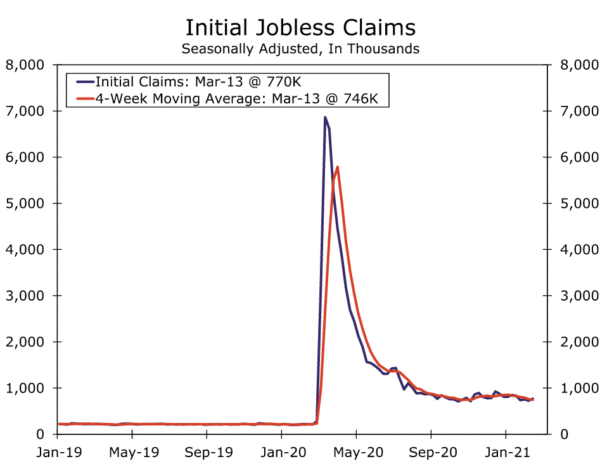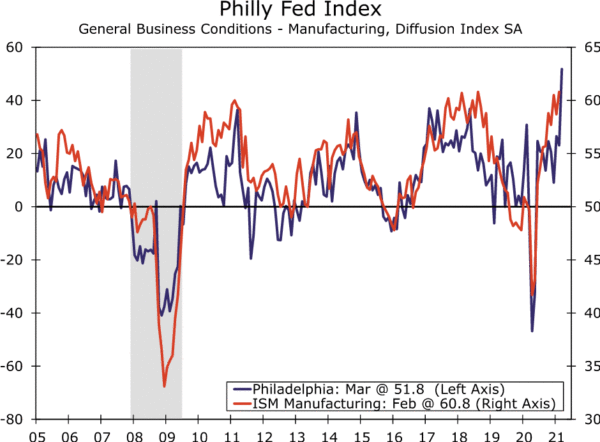The labor market’s recovery continues in fits and starts, with initial jobless claims rising to 770K last week but the four-week average is moving lower. Strengthening activity—on full display with a blockbuster Philly Fed reading of 51.8 this morning—should lead to a marked improvement in labor conditions in the next few months.
Claims Rose Last Week, but Trend Remains Downward
Initial jobless claims rose unexpectedly the week ending March 13 to a four-week high of 770K. Despite the increase, the four-week average fell as the labor market continues to improve, albeit in fits and starts.
The past week’s figure overlaps with the survey week for the March employment report. Since the February survey week, new filings fell by 64K, which remains consistent with hiring ramping up further in March.
With more fiscal support starting to hit household bank accounts this week, rising vaccination rates and milder weather, strengthening activity should drive claims lower. That said, the rapidly changing economic environment will keep businesses in adjustment-mode and claims elevated for a while.
Gonna Fly Now: Best Print for Philly Fed Since 1973
The Philadelphia Fed’s Business Outlook Survey soared to 51.8, that is the highest reading for this bellwether since it’s all-time high in March 1973. The outlook is undoubtedly brightening here. One month does not make a trend, but let’s call this what it is: euphoria not seen in a generation.
The report was not entirely full of good news; the prices-paid component shot up to 75.9, a big jump up from 54.4 in February and the latest inflation warning sign switching from amber to red.
There were plenty of positive signs as well, new orders shot up to 50.9, a more than doubling of last month’s 23.4. As we have seen in other measures, activity is rebounding so quickly that supply chains are having trouble keeping up. The index on delivery times nearly doubled to 29.5 from 15.1 previously and the pipeline is filling up as unfilled orders climbed to 21.8. An encouraging development here for logistics coordinators: shipments increased to the highest since last October. And for workers: hiring rose at the fastest pace since 2018.
The key theme for manufacturing this year is that growth is limited by capacity but not demand.














